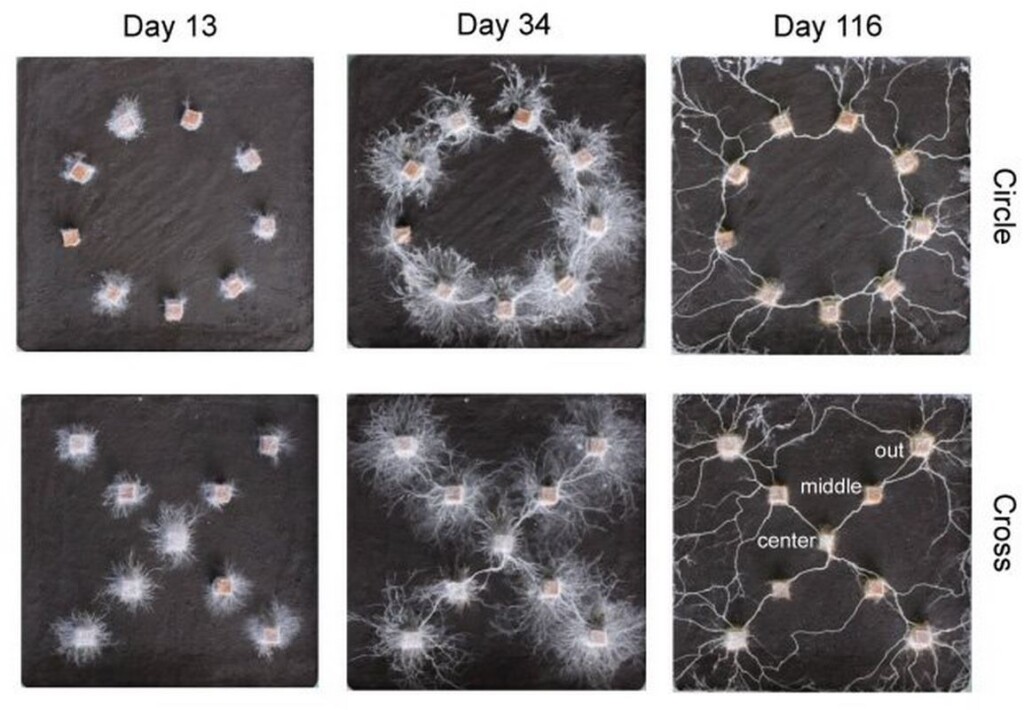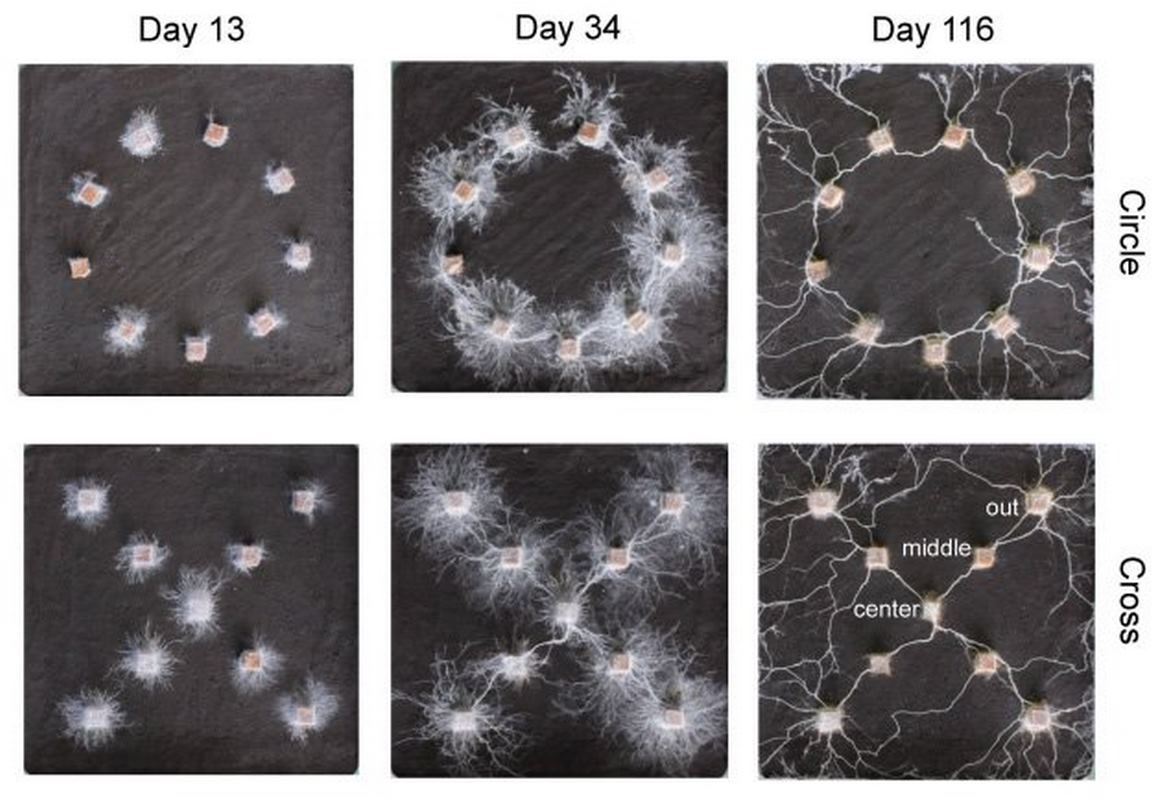
Can organisms without a brain still show signs of intelligence? Researchers at Tohoku University had this question in mind when conducting a study to measure the decision-making processes in fungi.
While it may sound like science fiction, this level of basal cognition is possible even in fungi, which created these shapes above.
“You’d be surprised at just how much fungi are capable of,” Yu Fukasawa of Tohoku University, told his university press team. “They have memories, they learn, and they can make decisions. Quite frankly, the differences in how they solve problems compared to humans is mind-blowing.”
Appreciation for the fact that not only are fungi their own kingdom of life, but one that’s more similar to animals than plants, is growing in the public consciousness, particularly among scientists.
Fungi grow by releasing spores, which can germinate and form long, underground, spidery threads known as mycelium. We typically only see the tiny mushrooms on the surface without realizing that there’s a vast network of interconnected mycelium beneath it. Single mycelia have been found growing across 900 hectares of ground—one organism, stretching over 2,000 acres.
It’s through this network that information can be shared, somewhat like neural connections in the brain, and GNN has reported before that electrical signals very similar to human vocabulary have been detected running along mycelial networks.
The present study examined how a wood-decaying mycelial network responded to two different situations: wood blocks placed in a circle versus an X arrangement. For example, if the fungi didn’t display decision-making skills, they would simply spread out from a central point without consideration for the position of the blocks. Remarkably, this is not what the researchers witnessed.
For the X arrangement, the degree of mycelial colonization was greater in the outermost four blocks. It was hypothesized that this was because the outermost blocks can serve as “outposts” for the mycelial network to embark on foraging expeditions, therefore more dense connections were required compared to the five blocks inside the X.
THEY’RE ALSO VITAMINS: Porcini Mushrooms Rank Among Highest in the World for Rare ‘Essential Vitamin’
In the circle arrangement, the degree of mycelial colonization was the same at any given block. However, all the empty space inside the circle remained clear. It was proposed that the mycelial network did not see a benefit in overextending itself in an already well-populated area.
These findings suggest that the mycelial network was able to communicate information about its surroundings throughout the entire network, and change its direction of growth accordingly based on the shape.
MORE FUNGI DEAS: Scientists Have Used Mushrooms to Make Biodegradable Computer Chip Parts
To avoid wasting energy growing into the center of the circle, for example, each mycelial tip would have to have some information that the center of the circle was an unwise place for growth—which it could only gain from information from the mycelial cells on the other side of the circle.
Our comprehension of the mysterious world of fungi is limited, especially when compared to our knowledge of plants and animals. This research will help us better understand how biotic ecosystems function and how different types of cognition evolved in organisms.
SHARE With Your Friends Who Fungi Can Have Spacial Recognition…




















